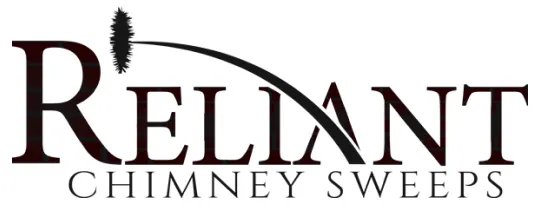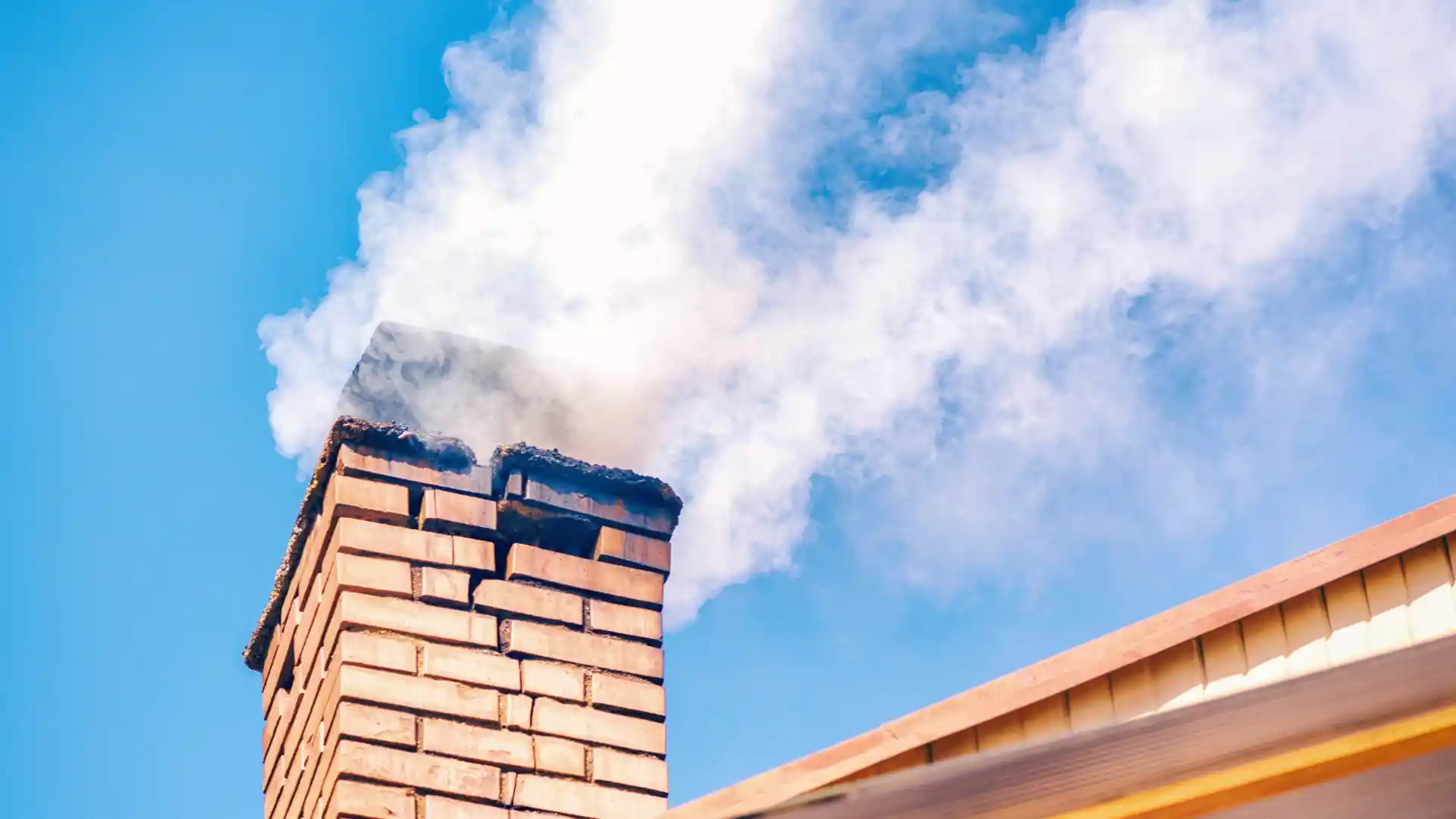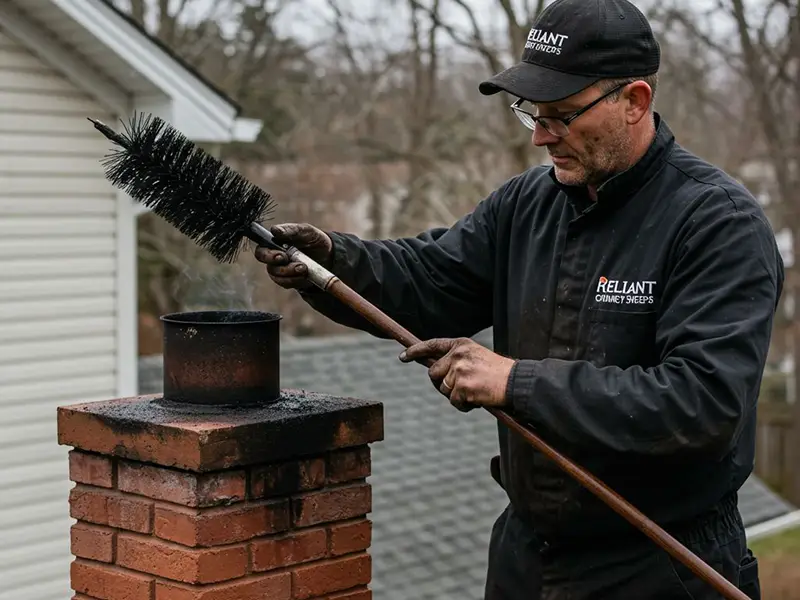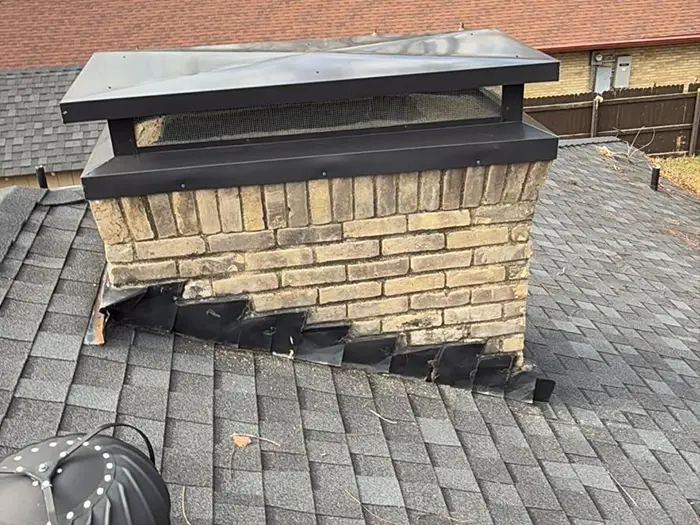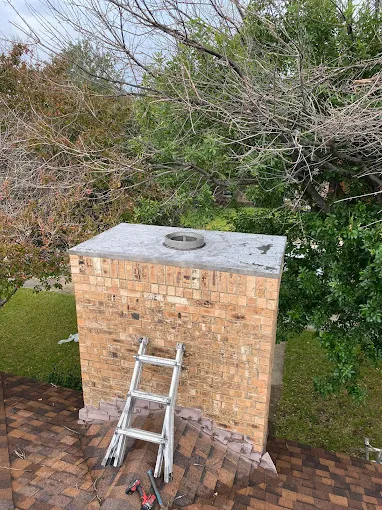Your chimney is more than just an architectural feature—it plays a critical role in venting smoke, gases, and combustion byproducts safely out of your home. While chimneys are designed to be durable, they are not immune to wear and tear. Spotting the early signs of chimney damage can save you from costly repairs, prevent safety hazards, and keep your home warm and secure. Here’s how to identify the signs of trouble before it’s too late.
1. Cracked or Deteriorating Masonry
The bricks and mortar of your chimney endure constant exposure to the elements, including heat, rain, snow, and freezing temperatures. Over time, these forces can cause cracks or crumbling in the masonry.
What to Look For:
- Visible cracks in the bricks or mortar.
- Missing or loose bricks.
- White powdery stains (efflorescence), indicating water penetration.
- Spalling bricks, where the surface flakes off due to moisture damage.
Why It Matters:
Left untreated, cracks and crumbling can lead to structural instability. Water infiltration can worsen the damage, particularly in freezing weather when water expands and breaks apart the masonry.
Solution:
Minor cracks can be repaired with tuckpointing, while more extensive damage may require professional masonry repair.
2. Chimney Leaks or Moisture Issues
A healthy chimney should be watertight, but prolonged exposure to rain, snow, and humidity can take a toll. Water intrusion is one of the most common causes of chimney damage.
What to Look For:
- Water stains on the ceiling or walls near your chimney.
- Damp patches inside the fireplace.
- Rusted components, such as the damper or firebox.
- Mold or mildew growth near the chimney.
Why It Matters:
Moisture not only damages the chimney structure but can also lead to mold growth, posing health risks for your family. Over time, water can weaken the chimney, increasing the risk of collapse.
Solution:
Ensure your chimney has a functioning cap and flashing to keep water out. Professional waterproofing treatments can also protect against future damage.
3. Chimney Crown Damage
The chimney crown is the concrete or mortar cap at the very top of your chimney. It acts as a shield, preventing water, debris, and animals from entering. A damaged chimney crown can allow water to seep in, leading to interior damage.
What to Look For:
- Cracks or chips in the crown.
- Pieces of the crown material in your yard or on the roof.
- Water pooling on the crown’s surface.
Why It Matters:
A damaged crown allows water to enter the chimney, accelerating wear and causing leaks and interior damage.
Solution:
Small cracks can be sealed with a crown repair material, while severely damaged crowns may need to be replaced by a professional.
4. Flue Damage
The flue is the inner lining of the chimney that protects the masonry from heat and corrosive byproducts. Damage to the flue can lead to inefficiency, fire hazards, and the escape of harmful gases into your home.
What to Look For:
- Cracks or gaps in the flue lining (often identified during an inspection).
- Smoke entering your home when using the fireplace.
- Increased soot or creosote buildup.
Why It Matters:
A damaged flue lining can expose the masonry to intense heat, increasing the risk of chimney fires. It may also allow carbon monoxide to leak into your home.
Solution:
Damaged flue liners should be repaired or replaced. Options include stainless steel liners, which offer long-term durability.
5. Unpleasant Odors
Chimney odors can be more than a nuisance—they’re often a sign of underlying problems.
What to Look For:
- A strong, musty smell coming from the fireplace.
- The odor of burnt creosote, especially in humid weather.
- Smoky smells even when the fireplace isn’t in use.
Why It Matters:
Odors may indicate creosote buildup, blockages, or water damage. Creosote buildup increases the risk of chimney fires, while blockages can cause smoke or carbon monoxide to backdraft into your home.
Solution:
Schedule a professional chimney cleaning and inspection to remove creosote, debris, and any animal nests that may be causing the odor.
6. Damaged or Missing Chimney Cap
A chimney cap serves as your chimney’s first line of defense against rain, debris, and animals. Without a functioning cap, your chimney is vulnerable to obstructions and damage.
What to Look For:
- A missing or dislodged chimney cap.
- Visible rust, cracks, or holes in the cap.
- Debris or animal activity in the chimney.
Why It Matters:
Without a cap, debris and animals can block your flue, restricting airflow and increasing fire risks. Rain can also enter, leading to water damage.
Solution:
Replace a missing or damaged chimney cap immediately. Opt for a cap with a mesh screen to prevent animal intrusion.
7. Draft Issues
A properly functioning chimney should create a steady draft to vent smoke and gases. If you’re experiencing draft problems, it could indicate damage or a blockage.
What to Look For:
- Smoke entering the room when the fireplace is in use.
- Difficulty starting or maintaining a fire.
- Excessive buildup of soot.
Why It Matters:
Draft issues can make your fireplace inefficient and unsafe, potentially allowing carbon monoxide to accumulate in your home.
Solution:
Have your chimney inspected for blockages, damaged components, or improper ventilation. A professional may recommend adjustments to your damper or flue size.
8. Signs of Creosote Buildup
Creosote is a highly flammable byproduct of burning wood. Over time, it accumulates on the walls of your chimney, increasing the risk of a chimney fire.
What to Look For:
- A shiny, tar-like substance on the chimney walls.
- Flakes of creosote falling into the fireplace.
- A strong, burnt smell near the fireplace.
Why It Matters:
Excessive creosote buildup is one of the leading causes of chimney fires. It can also block the flue, restricting airflow.
Solution:
Schedule a professional chimney cleaning to remove creosote and prevent fire hazards. Regular cleaning is recommended, especially if you use your fireplace frequently.
9. Chimney Leaning or Tilting
A leaning chimney is a serious structural issue that requires immediate attention.
What to Look For:
- A visibly tilting chimney.
- Gaps between the chimney and the house.
- Cracks in the chimney base or surrounding foundation.
Why It Matters:
A leaning chimney can collapse, posing a danger to your home and family. It’s often a sign of foundation issues or extensive masonry damage.
Solution:
Contact a professional immediately to assess the extent of the damage. Repairs may involve stabilizing the foundation or rebuilding the chimney.
10. Rusting Components
Metal components, such as the damper, flashing, or firebox, are susceptible to rust when exposed to moisture.
What to Look For:
- Rust on the damper or firebox.
- Discoloration or deterioration of the metal flashing around the chimney base.
Why It Matters:
Rust indicates water intrusion, which can lead to further damage to your chimney and fireplace.
Solution:
Replace rusted components and address the source of water intrusion, such as damaged flashing or a missing chimney cap.
Final Thoughts
Spotting the early signs of chimney damage is critical for maintaining the safety and efficiency of your fireplace. Regular inspections, timely repairs, and proactive maintenance can save you from costly repairs and ensure your chimney remains a reliable feature of your home.
For professional chimney inspections, cleaning, and repairs, contact Reliant Chimney Sweeps today. Protect your home by addressing chimney issues early—don’t wait until it’s too late!
